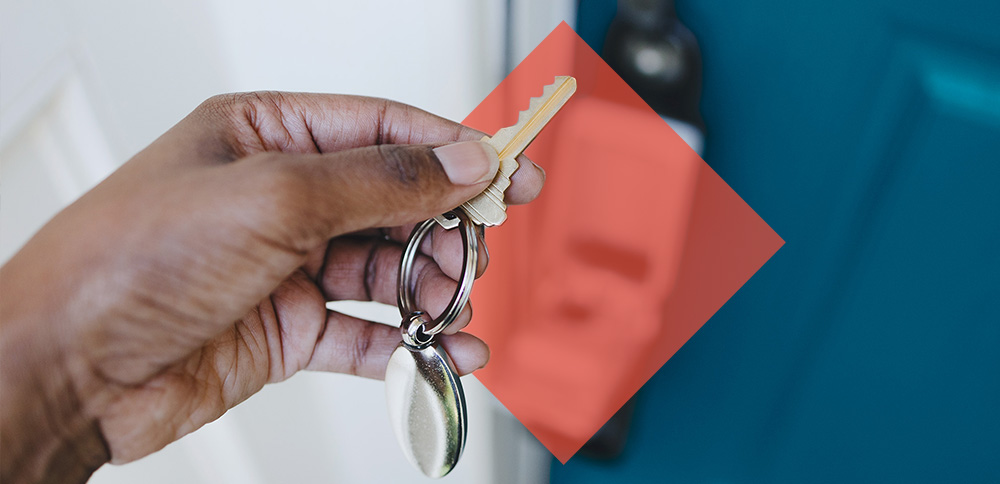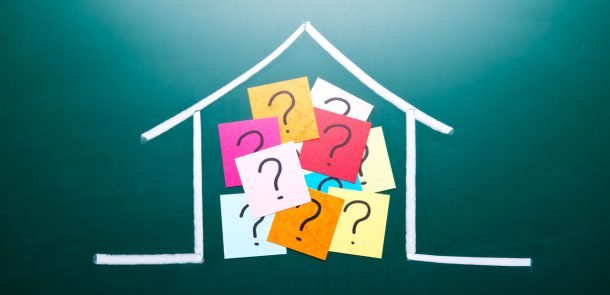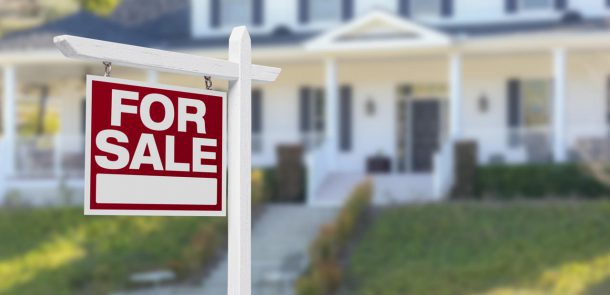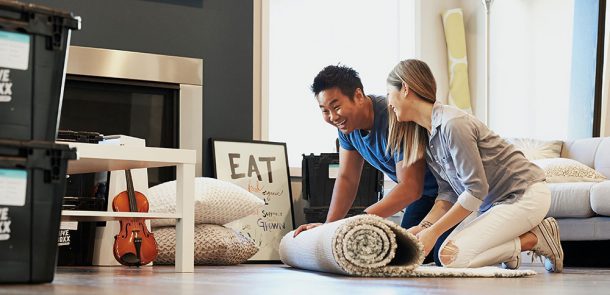Last updated on September 25, 2025.
You’ve put in the work, saving, searching, and scrolling through listings late at night when you really should be sleeping. Now, you’re ready to join the ~70 per cent of BC households who own their home.
Before you start picking out paint swatches, let’s talk about what else is about to hit your wallet. From closing costs to government fees, there’s more to buying a home than just the purchase price. And in 2025, some of these costs have changed.
“Everyone does varying degrees of research before they purchase a home, but there are a few things people don’t necessarily take into account,” says Ryan McKinley, Senior Mortgage Development Manager at Vancity.
We’re uncovering the hidden costs of home ownership and spotlighting tools like the Vancity mortgage calculator, so you can walk through your new front door as prepared as possible.
If you’re still in the early stages of buying a BC home, you can see how much of a mortgage you can afford with our affordability calculator. You can also stay on top of BC’s current mortgage rates and see how you can use a First Home Savings Account (FHSA) to grow your down payment.
Don’t let property taxes be a surprise bill in the mail.
The fire trucks, police department, and garbage pickup don’t pay for themselves. Property taxes are how you and your neighbours make sure your hometown keeps the lights on.
In BC, property taxes are determined by local municipalities and are based on the assessed value of your property. In Vancouver, for example, property tax is due twice a year, and you get a letter stating how much you owe and when to pay it.
Property taxes will be in all of your documentation, so you wouldn’t think of it as a hidden cost, but the timing can sneak up on you.
“Even though property taxes are front and centre, they aren’t necessarily due on a monthly basis,” says Ryan. “So, when the bill comes, it can catch people off guard if they’re not prepared for it. Many municipalities have the ability to pay monthly or to put funds toward your bill. Or you can automatically put what you owe aside in a savings account, so it’s ready when the time comes.”
Home inspection: assessing the hidden details
To ensure your investment is sound, a professional home inspection is essential. While not mandatory, they can save you from unexpected repair costs down the road. A home inspection typically ranges from $300 to $800, depending on the size and location of the property. An inspection of a condo would be cheaper than a detached house since there is generally less square footage and fewer items to inspect. Although this may seem like an added expense, a home inspection can provide peace of mind and protect you from potential hidden issues.
What to do:
- Pay attention to the property assessment you receive at the beginning of the year. This will show you how much your municipality thinks your property is worth, as of July 1 of the previous year.
- Tax rates and your property assessment will determine how much property tax you’ll owe.
Don’t let property transfer taxes be an unpleasant surprise.
Not to be confused with annual property taxes, the property transfer tax is one-time tax you pay when you purchase your home. The amount is based on the fair market value, or the purchase price. It might not be the most exciting part of home buying, which makes it an easy one to forget about.
As of 2025, here’s what you’ll pay:
- 1% on the first $200,000.
- 2% on the portion from $200,001 to $2 million.
- 3% from $2 million to $3 million.
- 5% on anything over $3 million (providing it’s residential).
Are you a first-time buyer? Then you might qualify for a full or partial property transfer tax exemption if your home is priced under $835,000.
What to do:
- Using the government’s property transfer tax calculator, you can calculate your potential property transfer tax costs when budgeting for your new home purchase.
- Make sure you save for these funds, since the transfer tax can’t be financed with your mortgage.
Home inspections are worth every penny.
When you’re buying a home, surprises are better left for housewarming parties, not a leaky roof.
A home inspection can feel like another line on a long list of expenses. But, as Ryan asks, “How much is your peace of mind worth? Yes, home inspections can cost hundreds of dollars, but they can potentially guard against thousands of dollars of expenses.”
A professional home inspection will show you what kind of shape the listing is in, letting you determine whether necessary repairs are worth it. “You’ll have an itemized list of things that you should keep an eye on or budget for in the future,” says Ryan. “I think it’s valuable, whatever the cost.”
You’ll be well aware of any problems like leaks, rot, or foundation issues—problems you don’t want to discover after move-in day. However, some problems could help you negotiate a lower price on the home.
What to do:
- Have a professional home inspector conduct an inspection before you close on the deal. That way, if they find major issues, you can walk away if you choose.
- To find one, shop around and get quotes from different contractors. The size and what kind of home you’re having inspected will determine the price of your inspection.
GST on new builds: the new-home tax.
If you’re buying a pre-sale or brand-new home, there’s a good chance GST will be part of the price tag at five per cent of the purchase price. But if you pay GST, you may not need to pay a property transfer tax.
As of 2024, the federal government raised the property transfer tax exemption:
- For a full exemption on newly built homes, your home can cost up to $1,100,000.
- You might still get a partial exemption if your home costs just over this limit. The tax break gradually decreases for homes priced slightly above the threshold but fully disappears if the home costs $1,150,000 or more.
“If you’re looking at GST as part of a purchase, it would only be for a newly built home, not a resale,” says Ryan. “With most lenders, the vast majority of the time, you can roll the GST expense into the overall value of the purchase, as long as the appraised value supports it.”
What to do:
Figure out if your home qualifies for the property transfer tax exemption by checking it against the government’s website.
Property insurance: protecting your investment.
Picture this: you come home and water is pouring through your ceiling light fixtures because a pipe burst in the upstairs bathroom. And then picture this: insurance covers your repairs, puts you up in a hotel, and replaces your soggy belongings. Get insurance, you’ll be glad if (or when) the unexpected happens.
There are three types of insurance to be aware of as a home buyer.
The first is high-ratio insurance. If you’re a first-time home buyer and your down payment is under 20 per cent (on a property up to $1.5 million), you’ll need high-ratio, or default, insurance. Unfortunately, this insurance is non-negotiable.
The second type of insurance is your home insurance. “What you need depends on what you’re buying,” says Ryan. “If you’re buying a strata unit, then some of your insurance (like fire or earthquake) will be covered by your monthly strata fees.” It’s always important to know what’s covered and how much your deductible is. “You’ll still require content insurance, which is for your belongings and any improvements you make to your unit.”
“If you’re buying a freehold home, then you’d need fire, earthquake, and what-have-you insurance,” says Ryan. The average monthly cost for homeowners’ insurance is around $100 to $140 a month or $1,200 to $1,700 a year.
“The third bucket of insurance is available to you as part of your mortgage that protects you against certain things in the future,” says Ryan. “So, when you get your mortgage, you’d be offered life, disability, loss of employment, and critical illness insurance.”
“When you buy a home, it’s a good time to review the insurance you already have, because you’re taking on a big debt,” says Ryan.
What to do:
- Shop around and see if you can find a policy that works for your budget.
- Bundle insurance packages (like with your car, if you have one) to save a buck.
- If you do any upgrades or repairs, like a new roof or plumbing, let your broker know. It could lower your premium.
- Ask your financial institution or advisor what you can expect to pay for high-ratio insurance, if you need it.
Maintenance and repairs are a part of life.
If your furnace breaks down in the middle of winter, you can’t just call your landlord, because you are the landlord now. Things break, wear out, and need fixing. Repairs and maintenance on your home are just a part of life.
The one per cent rule can help you figure out how much to put aside. You budget one per cent of the purchase price of your home each year to cover repairs and maintenance.
“Like all general rules, you need to augment it depending on your own situation,” says Ryan. “For example, if you’re buying an older home or a condo in an older building, it could be much more than one per cent. It could be closer to two to four per cent, depending on whether you have to e.g., replace the roof or gutters, or pay a levy to repair an elevator.”
What to do:
- Budget one to four per cent of the purchase price of your home annually for repairs and maintenance.
- Take your home inspection report, or any upcoming strata special levies, into account when you decide how much to budget.
Utilities are a monthly necessity.
Unless you live off the grid, utilities are an ongoing expense.
Utility costs, including hydro, water, and potentially gas, can fluctuate throughout the year based on how long your showers are and whether you leave your heat on high 24/7.
Clean energy rebates can be a cost-saving hack if you can afford the upfront investment. If you install energy-efficient tech or hardware, like air source heat pumps, new windows, solar panels, or insulation, BC Hydro, FortisBC, or provincial programs may help cover the cost. Plus, you’ll save on your utility bills down the line.
What to do:
Researching average utility costs in your area will help you estimate these ongoing expenses and incorporate them into your monthly budget.
Condo and strata fees are a part of community living.
First, the bad news: if you’re looking into an apartment, condo, or other strata property, you’ll have to put money into the communal pot.
The good news is that those condo fees cover shared expenses, so you’ll be splitting landscaping, repairs, and communal building cleaning fees with your neighbours. What you pay can vary quite a bit, depending on the size and age of your complex and the amenities provided.
Besides monthly strata fees, watch for special levies, which are one-off charges for projects like replacing a roof or fixing a retaining wall. “It’s so important to read the strata meeting minutes and annual general meeting (AGM) minutes beforehand, so you know what’s coming down the line,” says Ryan. “Special levies can range from a few hundred dollars to tens of thousands.”
Even a relatively lower levy can have a big impact. Ryan recalls working with a retiree on a fixed pension who faced a $5,000 special levy after living in their strata unit for years. “In the grand scheme, $5,000 might not sound huge, but if you’re on a fixed income, that’s a major financial shock,” he says.
“Vancity was able to help this member borrow and amortize that cost over time, so it was manageable. But it’s a reminder that these expenses can pop up when you least expect them.” It’s also a reminder that solutions can often be found with your financial institution for life’s curveballs.
And remember, strata fees go toward the building as a whole. You’re still responsible for repairs inside your own unit. As Ryan puts it, “Just because you’re paying strata fees doesn’t mean they’ll cover the cost of repairing your fridge if it breaks down.”
What to do:
- Review strata fees before you buy. They’re usually listed alongside the asking price.
- Read strata meeting minutes, especially AGMs, for any upcoming levies or fee increases.
- Expect small annual fee increases to keep pace with rising costs. If fees haven’t gone up in years, ask why. It could mean major costs are being delayed.
How to make sure you can afford the true cost of homeownership.
It’s easy to budget for the mortgage payment your lender says you can handle. But that number doesn’t always account for real life. “Think about the expenses that aren’t in the online calculators,” says Ryan. “Maybe you like to travel, or you have child support payments to make.”
Before you buy, take a real-world inventory of your spending. Use a spreadsheet, budgeting app, or even just a piece of paper. “Whatever tool you use, really try to get an accurate reading of what your budget is, not just what a financial institution’s calculator spits out to you,” says Ryan. Then, factor in the hidden costs we’ve covered here, plus your mortgage.
Try to live with your new budget for a couple of weeks. “You can take whatever the difference is between your current expenses and your future expenses, and throw that into a savings account,” says Ryan. “One, it will help you have more funds for closing costs or an emergency fund. And two, it will show you whether or not you can afford it comfortably.”
The Vancity team is here for you.
Buying a home isn’t just one big expense. It’s dozens of small (and not-so-small) ones that add up fast. But with a realistic budget, the right tools, and a team that’s on your side, you can walk in prepared.
“People tend to be intimidated by financial institutions,” says Ryan. “But there are people at Vancity who want to answer your questions. And don’t be afraid to talk to multiple people. When it comes to your advisor, you want to find someone you feel you can trust and have a conversation with.”
For free, professional advice on buying your first home, book an appointment with a Vancity Mortgage Specialist.








